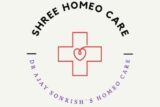India reported its first case of clade 1b of mpox, in a 38-year-old man in Kerala, who travelled from the United Arab Emirates. Clade 1b is the fast-spreading variant of mpox, which prompted the World Health Organisation to declare it a public health emergency of international concern (PHEIC).
The earlier case of mpox reported in India was from Delhi. A 26-year-old resident of Haryana’s Hisar had tested positive for clade 2 strain of the mpox.
Mpox is a viral infection caused by the monkeypox virus, a species of the genus Orthopoxvirus. There are two variants of mpox that are distinct in nature that influence the severity of the disease and its impact on affected populations.
These strains are: clade 1b (The Central African (Congo Basin) strain) and clade 2 ( West African strain).
This strain causes symptoms like skin rash that is followed by pus-filled blisters, high fever, headaches, muscle aches, back pain, low energy, swollen lymph nodes and sore throat.
The blisters can appear on the palms of the hand and soles of the feet, face, mouth, throat, groin and genital areas, and anus.
The mpox strain is transmitted via skin-to-skin contact. It can also include being face-to-face with someone who has mpox (such as talking or breathing close to one another, which can generate infectious respiratory particles).
According to the WHO, people with multiple sexual partners are at higher risk of acquiring mpox. Besides this, people can also contract mpox from contaminated objects such as clothing or linen, through needle injuries in health care, or in community settings such as tattoo parlours.
People with mpox can pass the disease on to others until all sores have healed and a new layer of skin has formed.
Children, pregnant women and those with weak immune systems are at a high risk of contracting mpox.
WHY IS CLADE 1B DEADLY?
The clade 1b strain is known for its higher virulence, leading to more severe symptoms and complications. Patients infected with the Central African strain are at greater risk of experiencing serious health issues, including a higher mortality rate of up to 10%.

